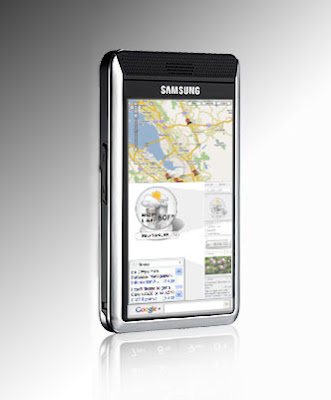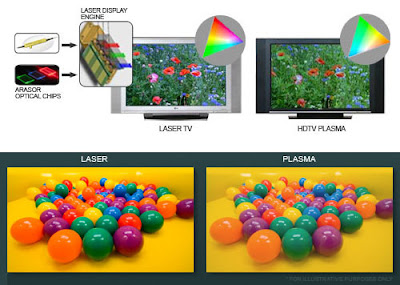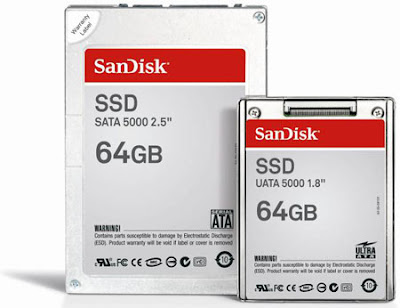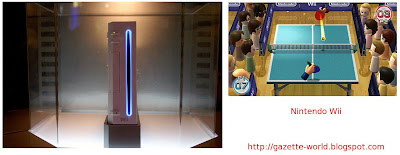A new type of memory technology could lead to thumb drives or digital-camera memory cards that store a terabyte of information--more than most hard drives hold today. The first examples of the new technology, which could also slash energy consumption by more than 99 percent, could be on the market within 18 months.
"It's a radically new technology," says Michael Kozicki, a professor of electrical engineering at the Arizona State University, whose group is one of several working on a version of the new memory. "If it really works as well as everybody thinks it could, it could genuinely revolutionize the memory and storage industry."
The new type of memory, called programmable-metallization-cell (PMC) memory, or nano-ionic memory, has been under development at the Arizona State University and at companies such as Sony and IBM. It's one of a new generation of experimental technologies that are bidding to replace hard drives, the nonvolatile "flash" memory used in portable electronics, and the dynamic random-access memory (DRAM) in personal computers. The first ionic-memory prototypes were far too slow for practical use. But recently, researchers have demonstrated that materials structured at the nanoscale could yield ionic-memory devices that are much faster. Nano-ionic memory is significantly faster than flash memory, and the speed of some experimental cells has rivaled that of DRAM, which is orders of magnitude faster than flash.
The memory could also prove easy to make. Recently, the Arizona group published work demonstrating that nano-ionic memory can be made from materials conventionally used in computer memory chips and microprocessors. That could make it easier to integrate with existing technologies, and it would mean less retooling at factories, which would appeal to manufacturers.
Another reason that ionic memory is attractive is that it uses extremely low voltages, so it could consume as little as a thousandth as much energy as flash memory. In theory, it could also achieve much higher storage densities--bits of information per unit of surface area--than current technologies can.
These attractions are largely the result of a new mechanism for storing information. Flash memory stores bits of information as electrical charge, but the smaller the memory cells that hold the bits, the less charge they can hold, and the less reliable they become. The new memory stores information by rearranging atoms to form stable, and potentially extremely small, memory cells. What's more, each cell could potentially store multiple bits of information, and the cells can be layered on top of each other, increasing the memory's storage density to the point that it might rival that of the densest form of memory today: hard drives.
Each memory cell consists of a solid electrolyte sandwiched between two metal electrodes. The electrolyte is a glasslike material that contains metal ions. Ordinarily, the electrolyte resists the flow of electrons. But when a voltage is applied to the electrodes, electrons bind to the metal ions, forming metal atoms that cluster together. These atoms form a virus-sized filament that bridges the electrodes, providing a path along which electrical current can flow. Reversing the voltage causes the wire to "dissolve," Kozicki says. The highly resistive state of the electrolyte and the other, low-resistance, state can be used to represent zeroes and ones. Because the metal filament stays in place until it's erased, nano-ionic memory is nonvolatile, meaning that it doesn't require energy to hold on to information, just to read it or write it.
A thumb drive that stored a terabyte of information, however, would have to take advantage of two other characteristics of nano-ionic memory, Kozicki says. First, it would have to store more than one bit of information per memory cell. Once the wire inside the cell forms, it's possible to apply a voltage again, causing more atoms to form, thickening the wire and further decreasing resistance. Successive jolts will thicken the wire yet more, and the different states of resistance could be used to store multiple bits of information per wire.
What's more, this type of memory can be stacked up in layers, since it's not necessary for each cell to be in contact with a base layer of silicon, as is the case with some other types of memory. Combining multiple bits per cell with multiple layers could make it possible to form extraordinarily dense memory, Kozicki says.
William Gallagher, a senior manager for exploratory nonvolatile-memory research at IBM Research, says that nano-ionic memory is one of several promising next-generation memory technologies. These include MRAM, which stores information using magnetic fields, and phase-change memory, which stores information in a way similar to that used to store bits on DVDs. Gallagher says that ionic memory's competitors have a head start on it. MRAM chips are already sold for some special applications, such as devices that will be exposed to harsh environments. But MRAM may also prove better for high-speed memory applications than as a replacement for flash, so it may not compete directly with nano-ionic memory. Samsung, however, could be selling a phase-change-based flash-replacement memory within a year.
Still, nano-ionic memory may not be far behind. A few companies have licensed nano-ionic-memory technology developed at the Arizona State University. These include Qimonda, based in Germany; Micron Technologies, based in Boise, ID; and a Bay Area stealth-mode startup. The startup is well on the way to producing its first memory devices, which Kozicki says could be available within 18 months. These first chips, however, won't rival hard drives in memory density, he says.
The new technology could nevertheless have difficulty winning wide adoption. Flash-type memory continues to improve and may do so for a few more generations of products. Also, the best nano-ionic-memory prototypes have been made from materials that aren't used in conventional microchips, so manufacturing could be costly, at least initially. Kozicki's group recently demonstrated that ionic memory can be built from a combination of silicon dioxide and copper--materials that are compatible with conventional manufacturing. But these materials do not perform as well, which could make them less attractive than alternatives such as phase-change memory. For the new type of memory to succeed, it may be necessary to convince manufacturers to switch to new materials.
Source: http://www.technologyreview.com/Nanotech/19643/page2/
http://www.technologyreview.com/Nanotech/19643/







